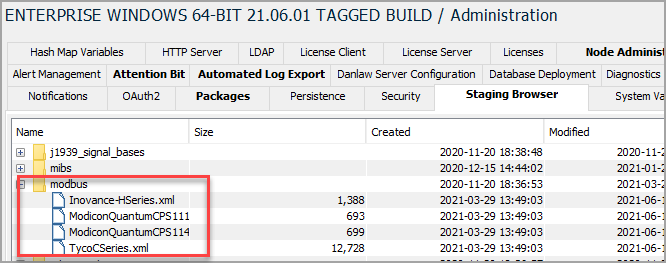Using XML to create a vendor specific Modbus device definition
The Modbus device driver provides a flexible design interface that allows you to configure the connection and data blocks associated with any device that supports the Modbus protocol. Using this generic Modbus device type, it is possible to specify the size for each of the four Modbus data block regions: coils, data inputs, input registers and holding registers.
There may be situations where this flexible design does not meet the needs of a specific Modbus enabled device. For example, a device might have 30,000 holding registers, but only a handful of those registers might be needed to solve a particular problem. Another example might be the desire to assign meaningful names to specific register locations that correspond to the data sheet of the Modbus device manufacturer.
To meet these needs the Modbus device driver has been designed to use vendor specific XML files that define the data block layout for a Modbus device. Working samples of these files are included with the Modbus device driver and are stored on the node in the Staging Browser in the modbus folder. The modbus folder is automatically created when the Modbus device driver is installed using the Administration > Packages tab.
The modbus folder contains three sample XML files that can be used as a base when creating a vendor specific Modbus device definition. Additional vendor specific XML files can be created and added to the modbus folder to expand the list of items that are available from the Device window > Type parameter > Modbus category. 
The Type parameter has several device types under the Modbus category: the generic Modbus Device and other vendor specific XML definitions.
Continue to XML for the Modbus device.